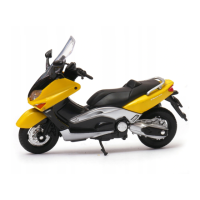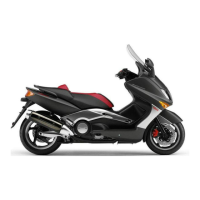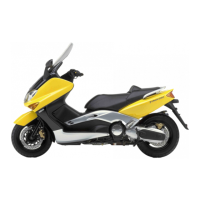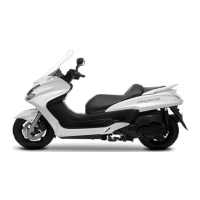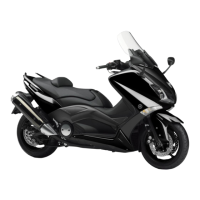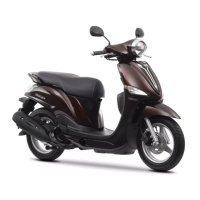ABS (ANTI-LOCK BRAKE SYSTEM) (XP500A)
8-75
EAS27790
ABS TROUBLESHOOTING OUTLINE
This section describes the troubleshooting about ABS in details. Read carefully this service manual be-
fore repairing various malfunctions, understand and perform the service.
Electronic control unit (ECU) has the self diagnostic function. When failures occur in the system, the
ABS warning light on the meter assembly indicates a malfunction.
Troubleshooting mentioned below describes the cause pursuing and service method according to the
indication by the maltifunction display. For troubleshooting other than these items, perform by following
the normal service method.
WARNING
EWA13880
When maintenance or checks have been performed on components related to the ABS, be sure
to perform a final check before delivering the vehicle to the customer. (Refer to “[D-6] FINAL
CHECK”.)
ABS warning light goes on and the ABS condition
● When the ABS warning light keeps going on → It works as a normal brake.
● Detecting the malfunction by means of the ABS self diagnostic function.
● Light goes on and off at the time of starting → ABS operation is normal.
● ABS warning light goes on for 2 seconds every time the main switch is turned on and goes off after-
ward.
● When the ABS warning light flashes → ABS operation is normal.
● Brake switch is defective or improperly adjusted.
● Rear wheel is racing.
● Continuous riding on extremely uneven roads.
● Defective starter motor monitor.
● Other defective
Self diagnosis and services
The ECU (ABS) has a self diagnostic function. By utilizing this function, quick and secure services are
possible. Previously occurred error phenomenon can be checked since it also installs the memory for
storing malfunction history.
“In case malfunctions are detected”
It is disabled to call the malfunction code by using the malfunction display since the ABS warning light
already goes on. Connect the test coupler adapter to the test connector, connect a pocket tester to the
terminal of light green lead and check by its pointing needle movement.
Refer to “[B-5] MALFUNCTION CHECK BY THE ABS SELF DIAGNOSIS (PRESENT MALFUNC-
TION)” on page 8-80.
“In case any malfunctions are not detected”
The multifunction display indicates all the malfunction codes recorded in the ECU (ABS). You can
check it by using a pocket tester. Note everything if more than two items of malfunction codes are re-
corded.
“Deleting the malfunction code”
When the malfunction service is finished, check the normal operation of vehicle then delete the mal-
function code(Refer to “[D-6] FINAL CHECK” on page 8-95). By deleting the malfunction code memory,
it is possible to pursue the cause correctly if the next defective phenomenon occurred.
Differences between the normal handling and services on a vehicle
● Care should be taken not to damage components by shocks and pulling too much since the ABS com-
ponents are precisely adjusted.
● ECU (ABS), HU, Wheel sensors and fail-safe relay cannot be disassembled.
Self diagnosis by ECU (ABS)
ECU (ABS) performs the static check for whole system when the main switch is turned on. It is also possible
to check the malfunction while riding. It is possible to check the recorded malfunction data by using a pocket
tester or the maltifunction display of meter by setting the ECU (ABS) to the self diagnostic mode since all
malfunctions which has been once detected are recorded.
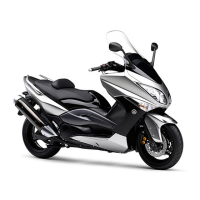
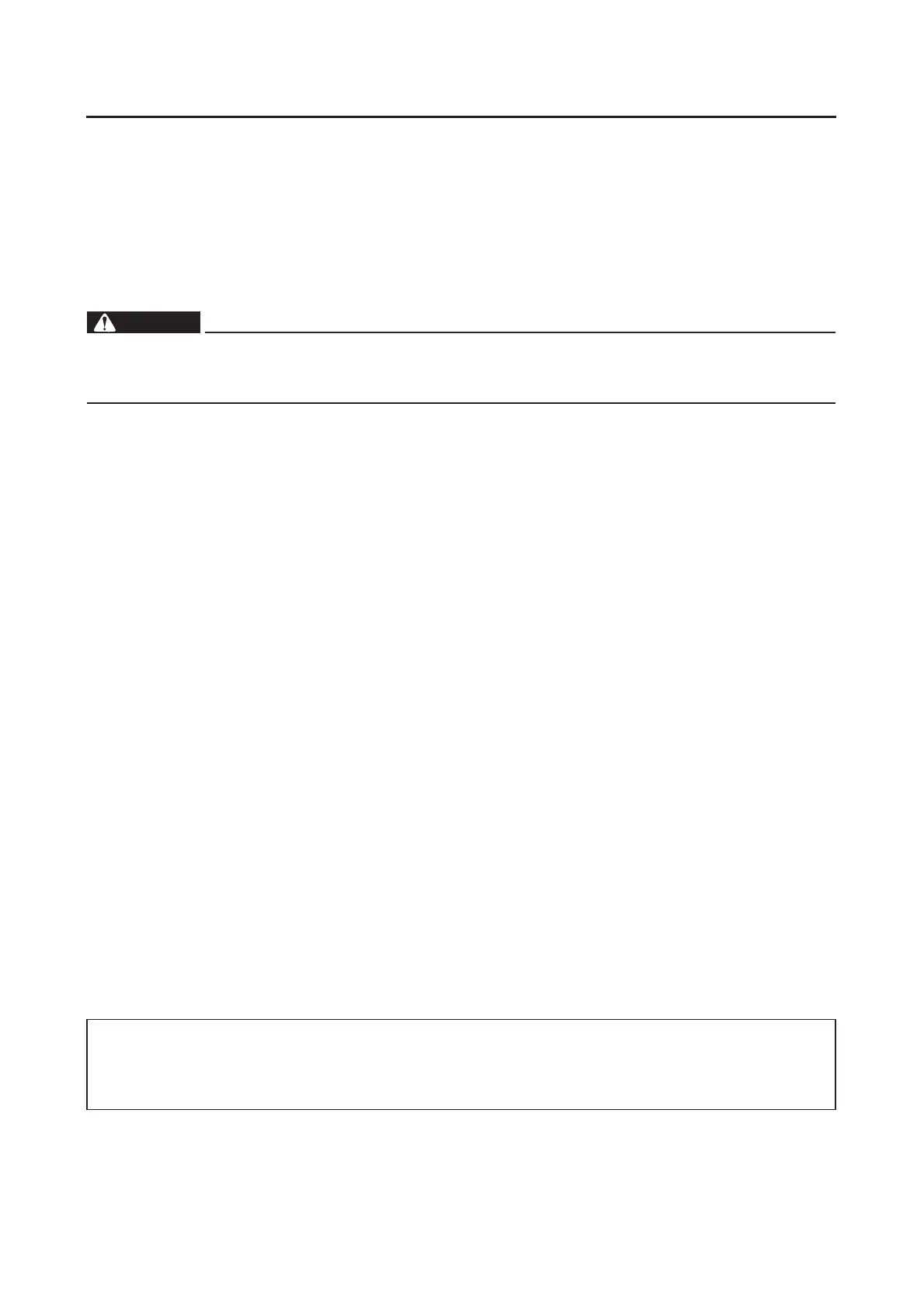